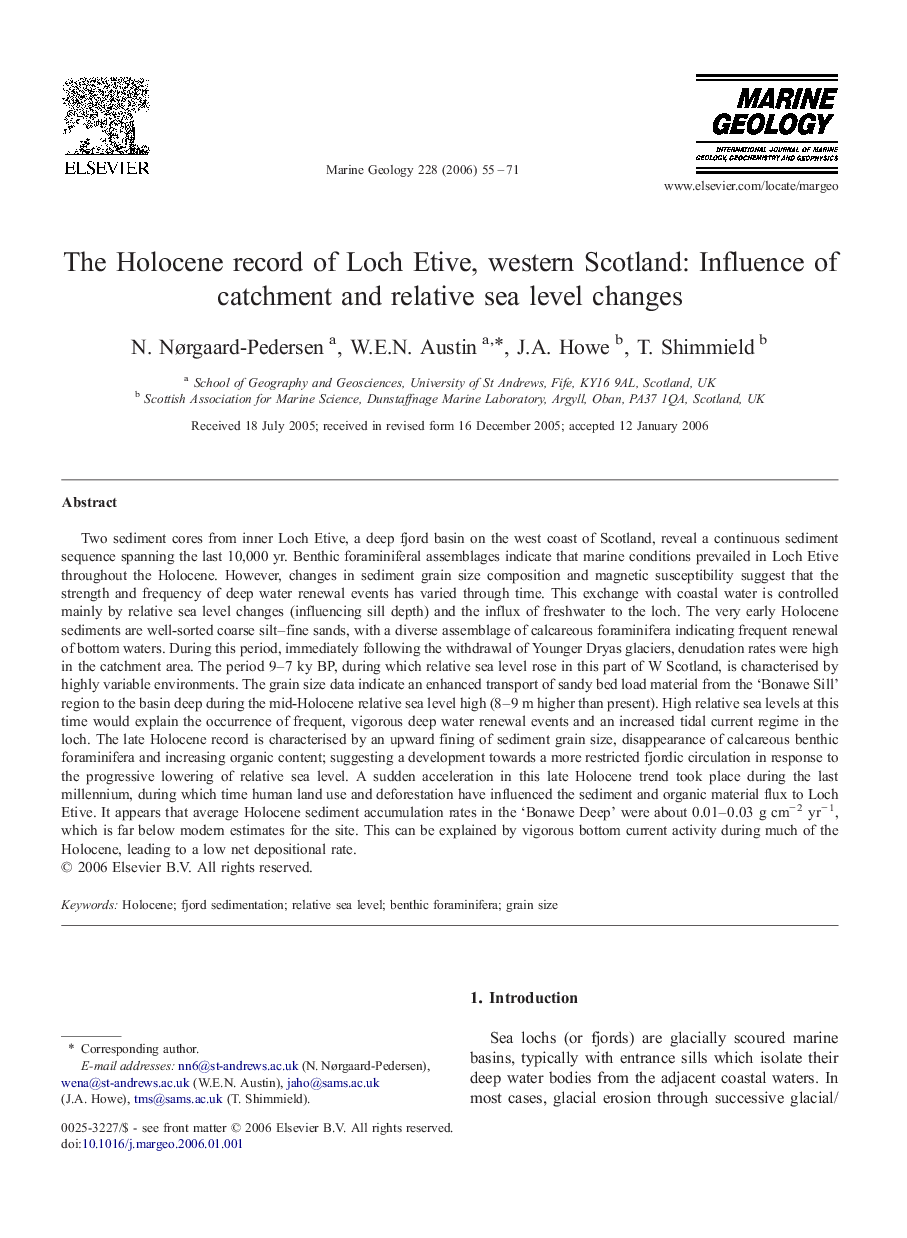| کد مقاله | کد نشریه | سال انتشار | مقاله انگلیسی | نسخه تمام متن |
|---|---|---|---|---|
| 4719764 | 1639213 | 2006 | 17 صفحه PDF | دانلود رایگان |

Two sediment cores from inner Loch Etive, a deep fjord basin on the west coast of Scotland, reveal a continuous sediment sequence spanning the last 10,000 yr. Benthic foraminiferal assemblages indicate that marine conditions prevailed in Loch Etive throughout the Holocene. However, changes in sediment grain size composition and magnetic susceptibility suggest that the strength and frequency of deep water renewal events has varied through time. This exchange with coastal water is controlled mainly by relative sea level changes (influencing sill depth) and the influx of freshwater to the loch. The very early Holocene sediments are well-sorted coarse silt–fine sands, with a diverse assemblage of calcareous foraminifera indicating frequent renewal of bottom waters. During this period, immediately following the withdrawal of Younger Dryas glaciers, denudation rates were high in the catchment area. The period 9–7 ky BP, during which relative sea level rose in this part of W Scotland, is characterised by highly variable environments. The grain size data indicate an enhanced transport of sandy bed load material from the ‘Bonawe Sill’ region to the basin deep during the mid-Holocene relative sea level high (8–9 m higher than present). High relative sea levels at this time would explain the occurrence of frequent, vigorous deep water renewal events and an increased tidal current regime in the loch. The late Holocene record is characterised by an upward fining of sediment grain size, disappearance of calcareous benthic foraminifera and increasing organic content; suggesting a development towards a more restricted fjordic circulation in response to the progressive lowering of relative sea level. A sudden acceleration in this late Holocene trend took place during the last millennium, during which time human land use and deforestation have influenced the sediment and organic material flux to Loch Etive. It appears that average Holocene sediment accumulation rates in the ‘Bonawe Deep’ were about 0.01–0.03 g cm− 2 yr− 1, which is far below modern estimates for the site. This can be explained by vigorous bottom current activity during much of the Holocene, leading to a low net depositional rate.
Journal: Marine Geology - Volume 228, Issues 1–4, 30 April 2006, Pages 55–71